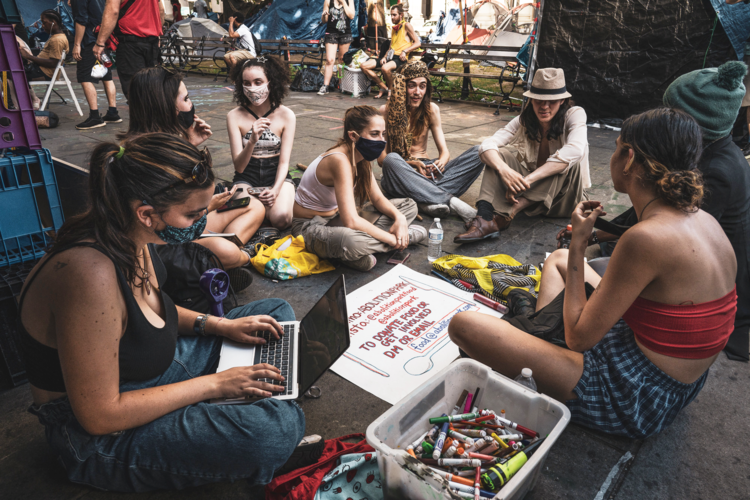August 10
Written by Mitali Shukla
Posted on The Panther Newspaper

On the fourth night of Abolition Park, camping Black Lives Matter (BLM) protestors fell asleep in City Hall Park only to wake up to a group of 30 to 40 police officers.
They claimed they were there to arrest protestors tagging a wall, and half of them began to target an 18-year-old Black male. The camping protestors tried to “de-arrest” him – a process described as using self-defense to physically intervene during an arrest.
Chapman junior Amalie Seyffert, a broadcast journalism and documentary major, watched in horror as the police began to respond violently.
“That was the first time I was on the front line and was the first time I’d ever really seen 10 to 20 cops standing over one small body, kicking it and brutalizing it,” Seyffert said. “I had never seen that many cops kicking someone and all of us were screaming.”
As BLM protests began to sweep the nation in June 2020, one of the first rallies held in New York City was five blocks from Seyffert’s home in Manhattan.
“I was unemployed … I wanted to spend that time on Black Lives Matter and the current Civil Rights Movement,” she said. “(When) I got there, immediately I was like, ‘How can I help?’ I was just so excited and I didn’t sleep at all.”
What began as a week-long protest, “Occupy City Hall,” turned into a larger movement known as Abolition Park. Occupy City Hall was a planned occupation of City Hall Park organized by Vocal New York, a local BLM organization. Their goal was to influence the New York City Council to vote to cut $1 billion dollars out of the New York Police Department’s (NYPD) budget. While the cut was made, the demands of the people weren’t, and the initial organizers Vocal New York dissociated from those occupying the park, leading to the establishment of Abolition Park.
“It was a space for mutual aid based in Black liberation and founded in solidarity with the Black Lives Matter movement,” Seyffert said. “We had tents set up all throughout City Hall Park … a bodega tent, a medical tent, food tents, a library, a mental health tent, a clothing tent. We also had programming: we had teach-ins every day, we had screenings, we had meditation scheduled and tarot readings.”
The first day of protests at Abolition Park brought forward a string of confrontations with police, in which they entered City Hall Park and attempted to remove the infrastructure built by the community living there. However, in the days following, protestors barricaded City Hall Park to keep law enforcement out.
Soon, seven days turned into 30. While the first week was a communal oasis of events that featured different bands playing constantly, the remaining three weeks saw a dwindled population of a couple hundred protestors. The longer the occupation of City Hall Park waged on, the more instances of police brutality Seyffert witnessed against protestors in Abolition Park.
As a member of the media team for the Abolition Park Instagram account, Seyffert recounted the trauma she experienced when the park’s occupants were forced to vacate the premises after NYPD seized the area July 22, exactly a month after it had been established.
“There were 40 people about sleeping at 3 a.m. and (the police) came in with shields, pepper spray and full riot gear,” Seyffert said. “Hundreds of NYPD officers forced everyone out and destroyed $20,000 worth of property – communal and personal property.”
After the physical space of Abolition Park was forcibly seized by police, Seyffert returned home more frequently, reflecting on her experience with police violence and being a part of an abolitionist community. Something her and fellow protestors talked a lot about, she said, was the concept of the “cop in your head.”
“(Abolition Park) made me think a lot more about classism and racism,” Seyffert said. “The instinct to police each other is deeply ingrained in American society.”
